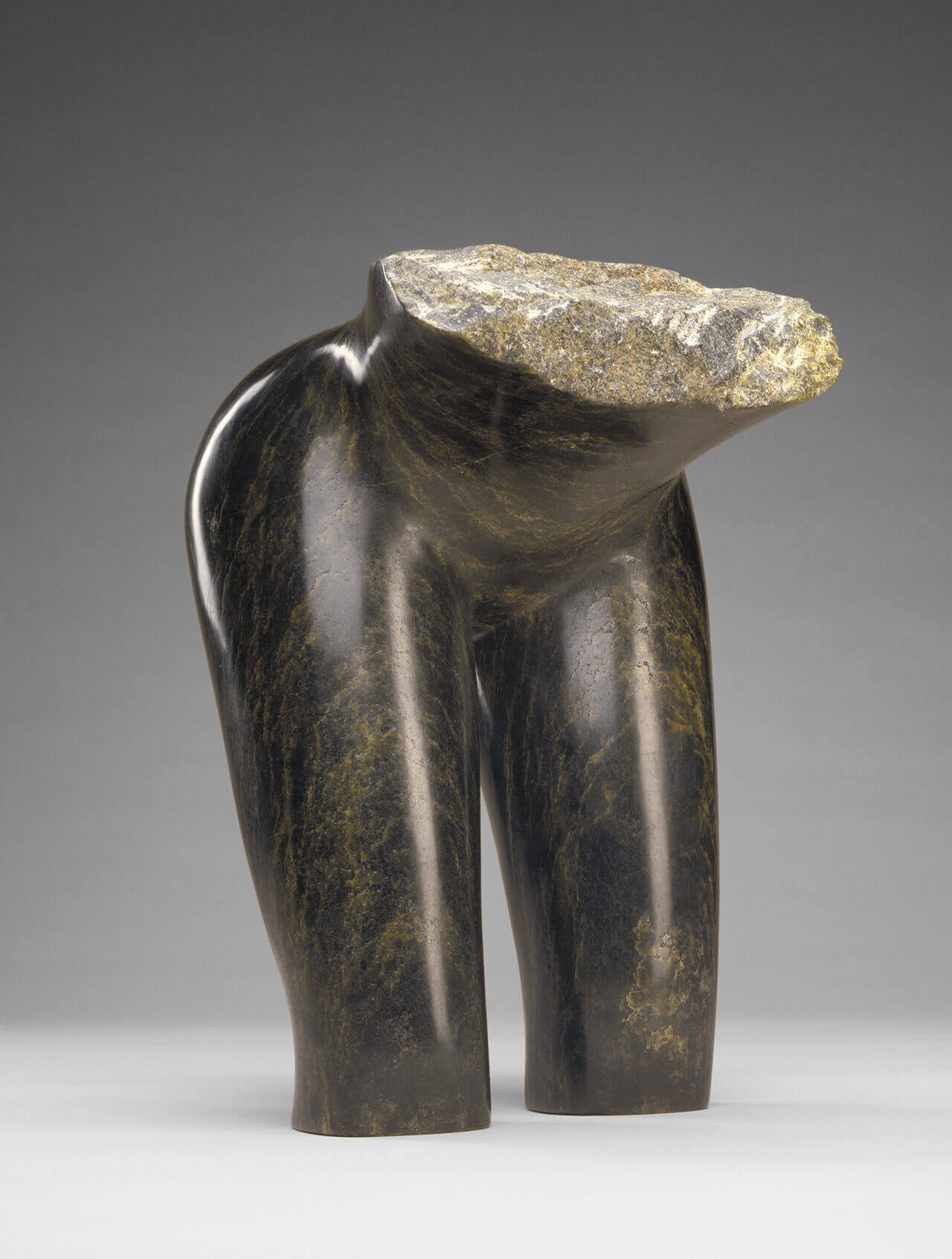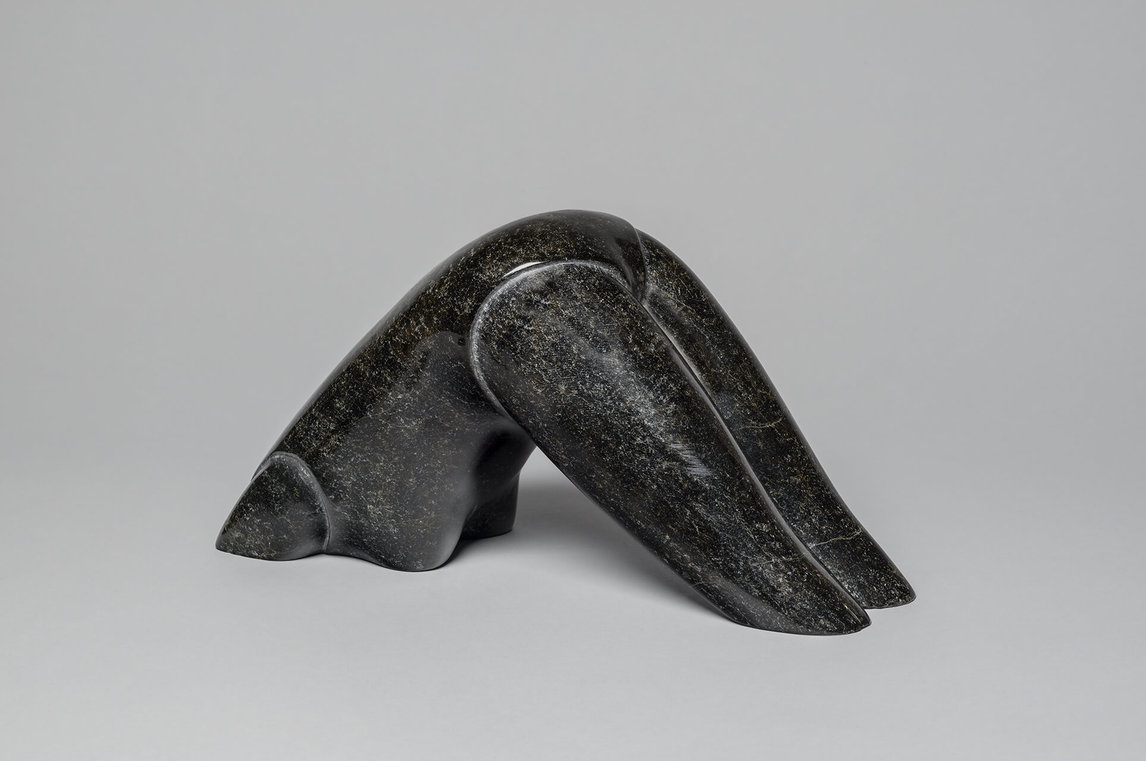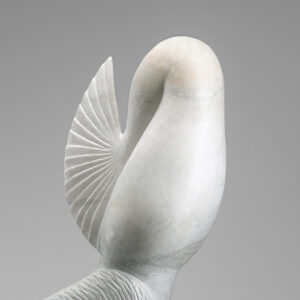Skier 1993

Oviloo Tunnillie, Skier, 1993
Serpentinite (source unknown), 30 x 31 x 44 cm
National Gallery of Canada, Ottawa
Oviloo Tunnillie’s carving now known as Skier first appeared as Torso Fragment in the Marion Scott Gallery 1994 exhibition Oviloo Tunnillie. As it was being considered for acquisition by the National Gallery of Canada, curator Christine Lalonde met with Oviloo in Cape Dorset to discuss its title. Oviloo explained that her sculpture of a bent human torso was originally intended to be a downhill skier. When it accidentally fell, separating at the bend, she preferred the new result. She liked the contrast of the exposed raw stone with the smoothly polished legs. Over the years, she was to use this contrast in texture repeatedly, in works such as Self-Portrait with Carving Stone, 1998, and Woman Carving Stone, 2008.

Skier is a bold sculptural statement and presents a complete reversal of a romantic Western notion that figures in Inuit carving emerge from the stone in its natural state. As pointed out by Robert Kardosh of Marion Scott Gallery, “[Skier] challenges our image of the Inuit carver who innocently releases form in compliance with the will of the stone. Here it is the sculptural hand that prevails. . . . If the artist commands stone and not the reverse, both artistry and material were happily subjected to the dictates of chance in the execution of this piece.”
Oviloo’s interest in such dramatically abstracted sculpture is evident in another of her athletes, Synchronized Swimmer, 1999. She commented on its form shortly after she created it:
I did the synchronized swimming where part of the body shows and part of the legs show. Sometimes I do abstract pieces. That’s why they are like that. . . . When I don’t know what kind of piece I am going to make, I make abstract pieces such as parts of the body.
When one first views Synchronized Swimmer, one is surprised and delighted with the realization that the artist has left the underwater parts of the figure to be filled by the viewer’s imagination. Through abstraction, the artist succeeds in defying the physicality of the sculpture by creating a sense of movement.

 About the Author
About the Author
 More Online Art Books
More Online Art Books
 Acknowledgements
Acknowledgements